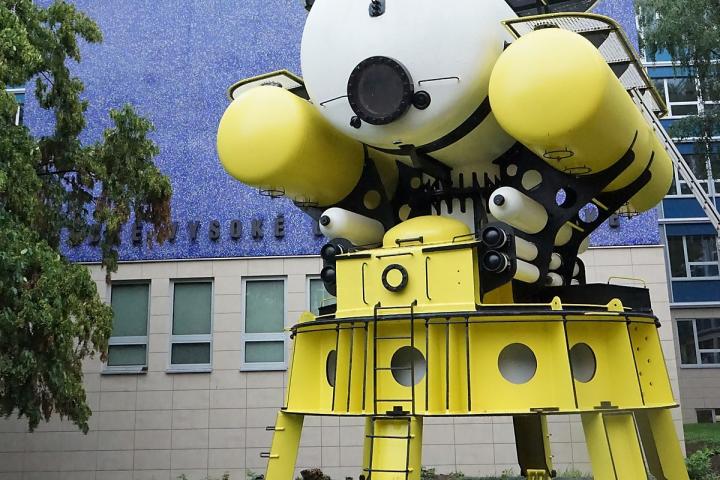
The hydronaut was transported from a flooded quarry in Jesenné, where three scientific missions were carried out at a depth of 10 metres below the surface, simulating the conditions of an isolated environment. Other scientific experiments included determining the composition of the light spectrum in an atypical enclosed environment or investigating the production of the "sleep hormone", melatonin, in the human body. The underwater habitat, a sort of hybrid between a submarine and a caisson, was designed and built for the purpose of interplanetary flight simulations, in particular for testing technical equipment and for researching the behaviour of crew members in the harsh conditions of long-term isolation in an adverse environment. The author is professional diver and space architect Matyáš Šanda. Scientists from the Czech Technical University in Prague also participated in the project. A team from Faculty of Mechanical Engineering from the Department of Fluid Dynamics and Thermodynamics designed and constructed equipment for long-term online monitoring of the state of the atmosphere inside the habitat, in particular temperature, humidity, pressure, atmospheric composition and intensity or temperature and illumination inside the Hydronaut laboratory. Scientists from other faculties have been investigating the possibilities of eliminating high humidity, around 95%, and observing how the human body copes with the unusual environment. The three men were underwater in the lab in a space of about 20 cubic meters, and data on their health were recorded by electrodes they wore at all times. The research also involved monitoring and assessing the emotions of the researchers.
The Hydronaut will remain on the Dejvice campus, between the buildings of Faculty of Mechanical Engineering and Faculty of Electrical Engineering, for about two years and the research will continue with the participation of scientists from CTU in the "dry mission" phase.
More information about the Hydronaut project can be found at www.hydronaut.eu or on the project's Facebook page.